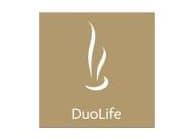
Boiled Eggs 101: A Beginner’s Guide to Boiling and Using Them in Recipes
Boiled eggs might seem like a simple and unassuming food, but they are actually incredibly versatile and nutritious. Whether you’re looking for a high-protein breakfast, a snack on the go, or an ingredient for recipes, boiled eggs have got you covered. In this post, we’ll go over the basics of boiling eggs and offer some ideas for using them in recipes.

First, let’s talk about how to boil eggs. There are a few different methods you can use, depending on your preference and the type of egg you’re using. Here are a few options to try:
- Hard-boiled eggs: To hard-boil eggs, place them in a single layer in a saucepan and cover with cold water. Bring the water to a boil, then reduce the heat to a low simmer and cook the eggs for 10-12 minutes. Remove the eggs from the heat, drain the water, and let them cool before peeling and eating.
- Soft-boiled eggs: For soft-boiled eggs, follow the same process as for hard-boiled eggs, but reduce the cooking time to about 6-7 minutes for a runny yolk or 8-9 minutes for a slightly firmer yolk.
- Steamed eggs: To steam eggs, fill a saucepan with a few inches of water and bring it to a boil. Place the eggs in a steamer basket or on a rack over the boiling water, cover the pan, and steam the eggs for about 12-15 minutes for hard-boiled eggs or 6-8 minutes for soft-boiled eggs.
No matter which method you choose, be sure to start with eggs that are at room temperature for the best results. And if you’re having trouble peeling your hard-boiled eggs, try giving them a cold water bath or rolling them gently on the counter to crack the shells before peeling.
Now that you know how to boil eggs, let’s talk about some of the ways you can use them in recipes. Boiled eggs are a great source of protein and can be used in a wide range of dishes, from simple snacks to more elaborate meals. Here are a few ideas to get you started:
- Egg salad: Dice up some hard-boiled eggs and mix them with mayonnaise, mustard, and your choice of diced vegetables and seasonings to make a classic egg salad. Serve it on sandwiches or with crackers as a snack.
- Deviled eggs: Cut hard-boiled eggs in half, scoop out the yolks, and mix them with mayonnaise, mustard, and spices to make deviled eggs. Fill the egg whites with the yolk mixture and garnish with paprika or herbs.
- Egg sandwiches: Slice hard-boiled eggs and add them to sandwiches with your choice of fillings, such as lettuce, tomato, cheese, and avocado.
- Egg muffins: Crack a few eggs into a muffin tin, add your choice of diced vegetables and seasonings, and bake until the eggs are set. These muffins make a convenient and portable breakfast or snack.
- Egg and avocado toast: Slice a hard-boiled egg and mash some avocado onto toast, then top with the egg slices and a sprinkle of salt and pepper.
With a little creativity,
In conclusion, boiled eggs are a nutritious and convenient food that can be used in a variety of recipes. Whether you prefer them hard-boiled, soft-boiled, or steamed, there are many ways to incorporate boiled eggs into your diet. From classic egg salad and deviled eggs to more creative dishes like egg muffins and avocado toast, there’s something for everyone. Boiled eggs are also a great source of protein and other essential nutrients, making them a healthy choice for a snack or meal. And with a little practice, you’ll be a pro at boiling eggs perfectly every time. So the next time you’re looking for a protein-packed meal or snack, don’t forget about the humble boiled egg – it’s a versatile and tasty choice that you’ll want to keep coming back to.
__PRESENT
__PRESENT__PRESENT
Related
Trackbacks and pingbacks
No trackback or pingback available for this article.






Leave a reply